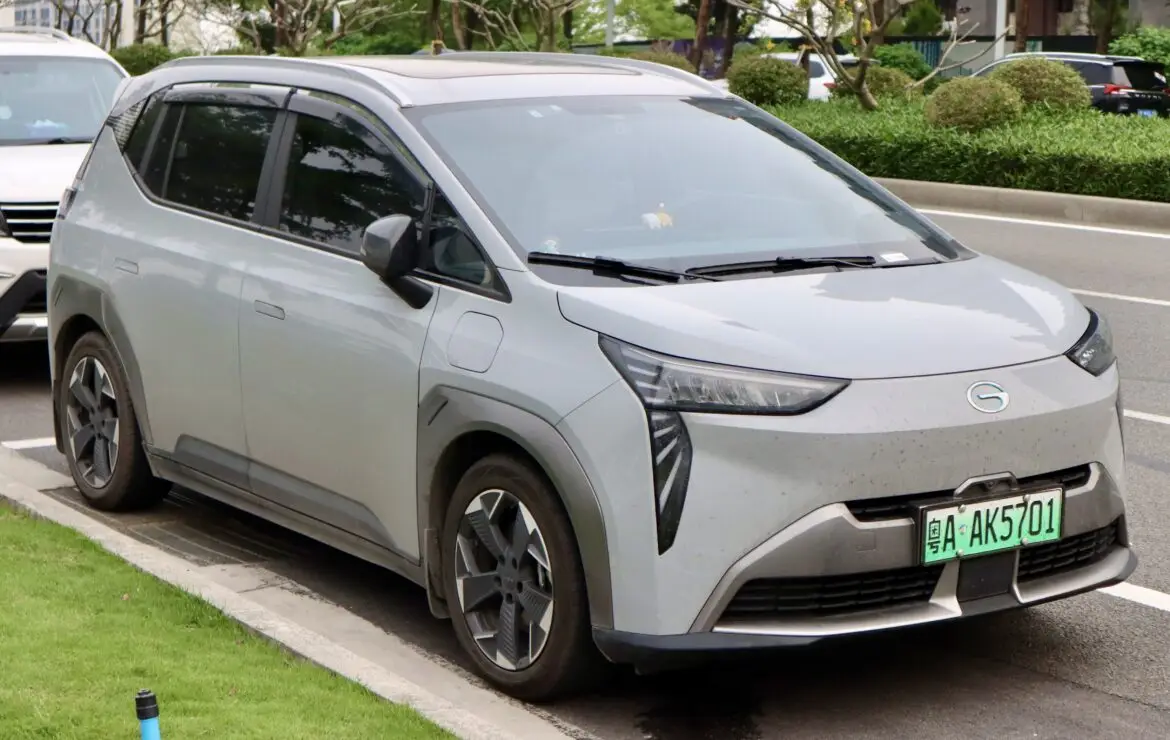Chinese electric vehicle manufacturer GAC AION, a subsidiary of GAC Group, has opened a new factory in Rayong province, Thailand. The 2.3-billion-baht (USD 64.03 million) facility, located approximately 180 km east of Bangkok, marks the company’s strategic expansion into Thailand, a key regional hub for auto production and export.
During the inauguration, GAC Group Chairman Zeng Qinghong expressed the company’s intention to “bolster Thailand’s EV production capabilities and position the country as a center for the EV industry in Southeast Asia.” Thailand, historically dominated by Japanese automakers, is witnessing a shift as Chinese EV manufacturers invest heavily in the market, exceeding USD 1.44 billion in total.
The new GAC AION factory is designed to produce up to 50,000 vehicles annually, according to Thailand’s Minister of Industry Pimphattra Wichaikul. The company emphasizes a strategy of efficient production using AI technology to minimize costs and waste.
This development follows the recent opening of another Chinese EV manufacturer, BYD Motor, in Thailand. The rapid expansion of Chinese EV makers has begun to impact Japanese automakers in the country, with Suzuki Motor announcing the closure of a factory producing 60,000 cars annually and Honda Motor consolidating its Thai operations into a single facility.
The Thai government has set a target for EVs to comprise 30% of its annual 2.5 million car production by 2030, driven by consumer adoption aided by government subsidies and tax incentives.
Thailand has long been a hub for automotive manufacturing in Southeast Asia, with major Japanese automakers like Toyota, Honda, and Isuzu operating production facilities in the country. However, the industry is undergoing a significant transformation as electric vehicle (EV) adoption gains momentum. The Thai government has set ambitious targets, aiming for EVs to make up 30 percent of the country’s annual 2.5 million vehicle production by 2030.
Thailand’s strategic location, well-developed infrastructure, and skilled workforce have long made it a preferred destination for global automakers seeking a production and export hub in Southeast Asia. The country’s automotive industry accounts for a significant portion of its GDP and is a major contributor to its export economy, with vehicles and parts making up around 12 percent of Thailand’s total exports.
India can take several steps to attract more investments and deals like GAC AION’s new electric vehicle factory in Thailand. Firstly, India should strengthen its EV-friendly policies and incentives. This includes implementing comprehensive EV policies that provide attractive subsidies, tax breaks, and other financial incentives for both EV manufacturers and consumers. Additionally, India should develop a robust charging infrastructure network across the country to support the growing EV market and offer land acquisition support and streamlined approval processes for setting up EV manufacturing facilities.
Secondly, India needs to enhance its ease of doing business. The country should continue to improve the overall ease of doing business by reducing bureaucratic hurdles, simplifying regulations, and ensuring a transparent and efficient investment climate. Providing single-window clearance for setting up manufacturing facilities can help expedite the approval process, and ensuring policy stability and consistency will build investor confidence.
India should also leverage its strong manufacturing capabilities to attract EV investments. The country should highlight its skilled workforce and cost-competitiveness as advantages for EV production, encourage the development of a domestic EV component ecosystem, and promote India as a strategic manufacturing hub for EVs, targeting both domestic and export markets.
Furthermore, India should strengthen collaboration and partnerships with global EV manufacturers. This can involve engaging in bilateral and multilateral dialogues to explore investment and technology-sharing opportunities, facilitating joint ventures and technology transfers, and establishing dedicated investment promotion agencies to actively court and support foreign EV companies interested in setting up operations in India.
Finally, India should invest in research and development in the EV sector. This includes increasing funding and support for R&D in EV technologies, battery development, and related infrastructure, encouraging collaborations between academia, research institutions, and the private sector, and developing specialized EV-focused skill development programs to build a talented workforce.
By implementing these strategies, India can position itself as an attractive destination for EV manufacturers, leveraging its market potential, manufacturing capabilities, and policy support to attract investments and establish a thriving electric mobility ecosystem.


Leave a Reply